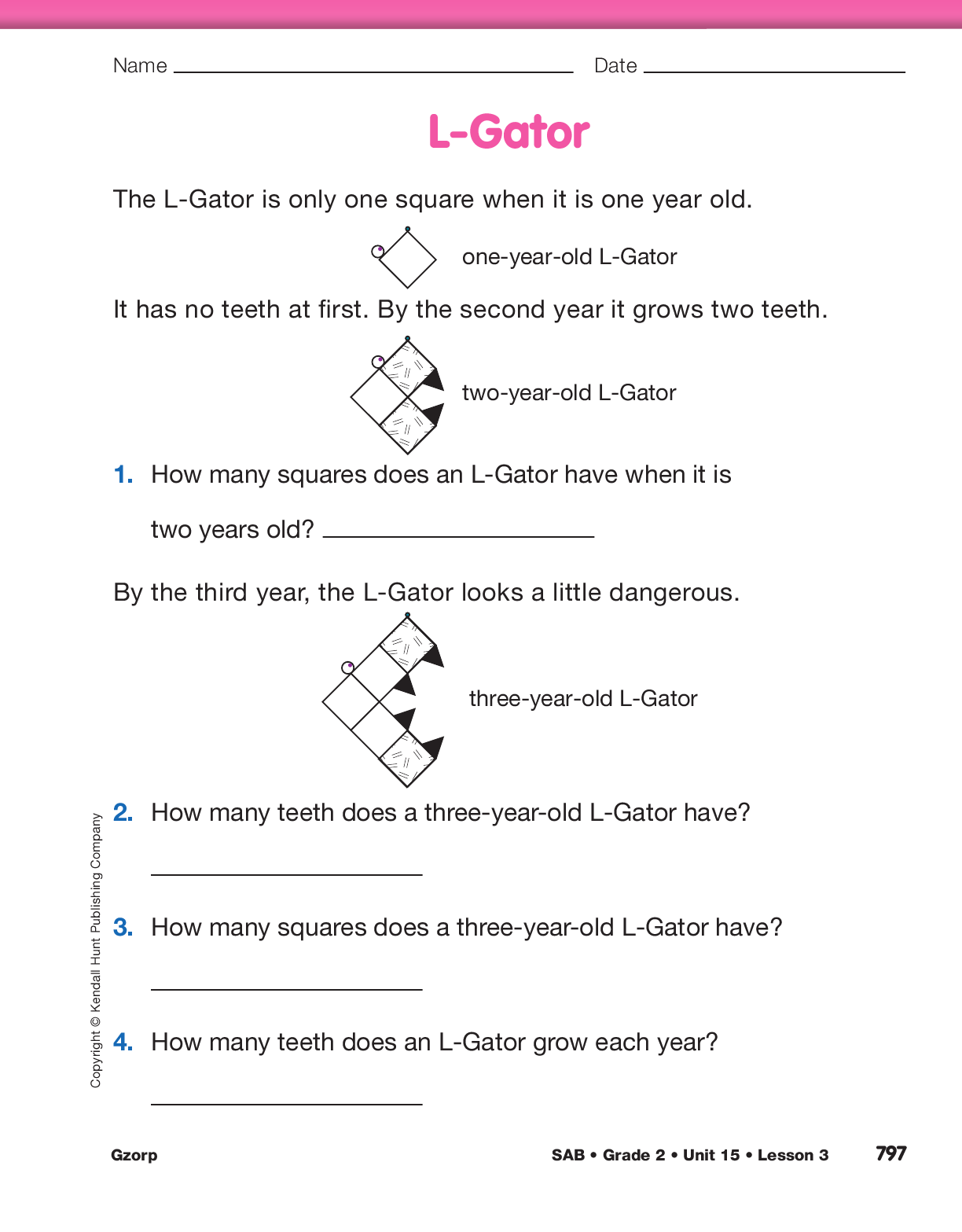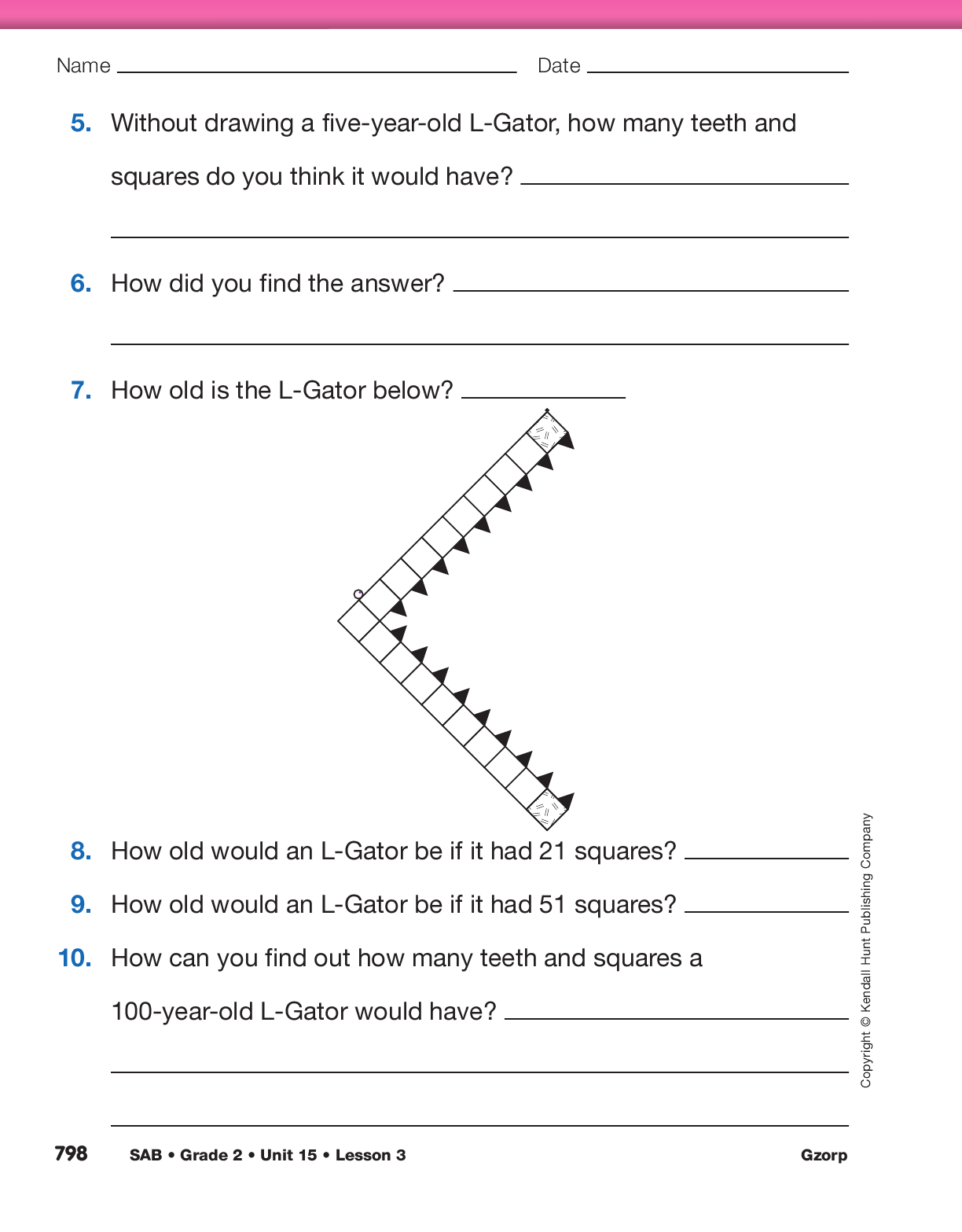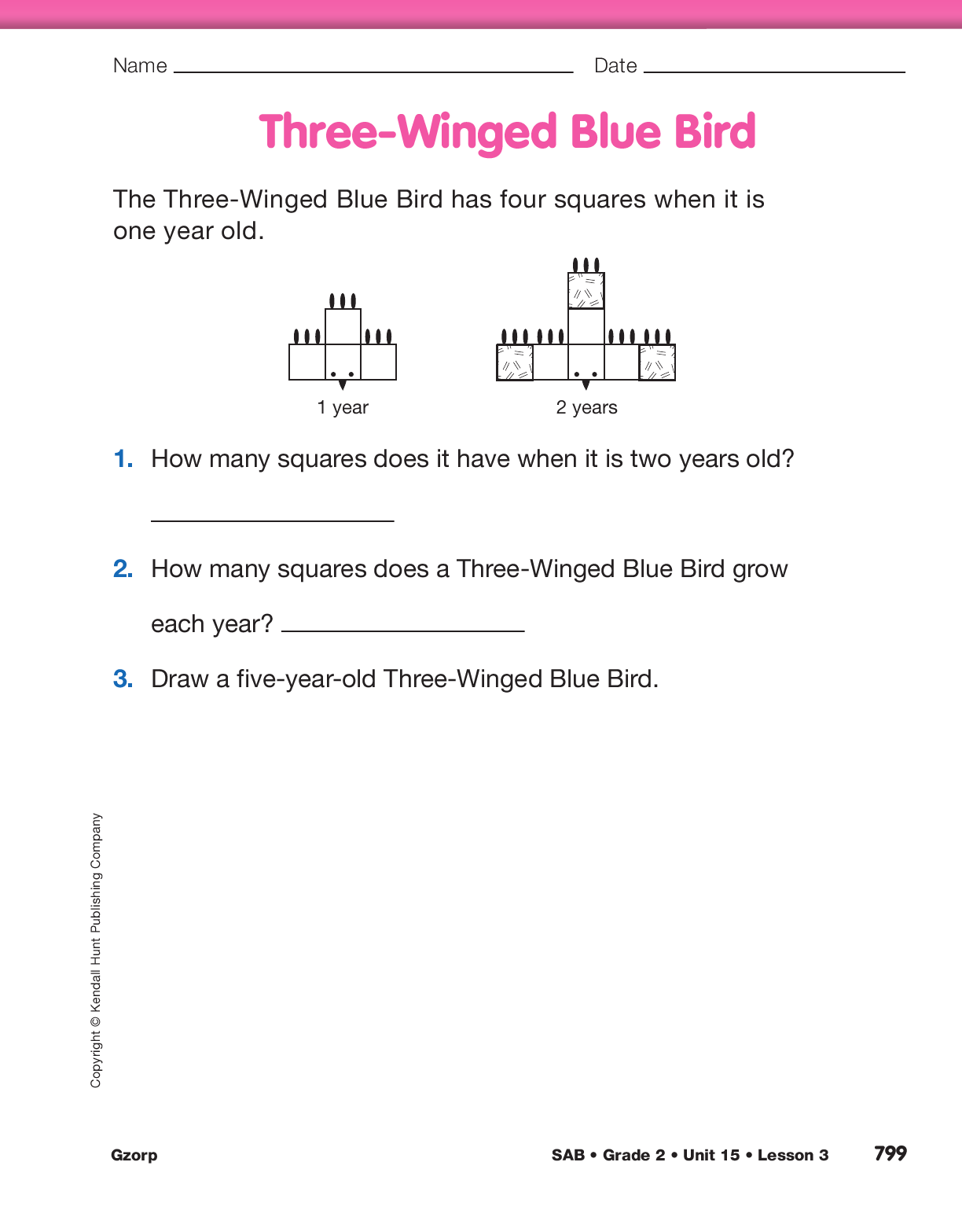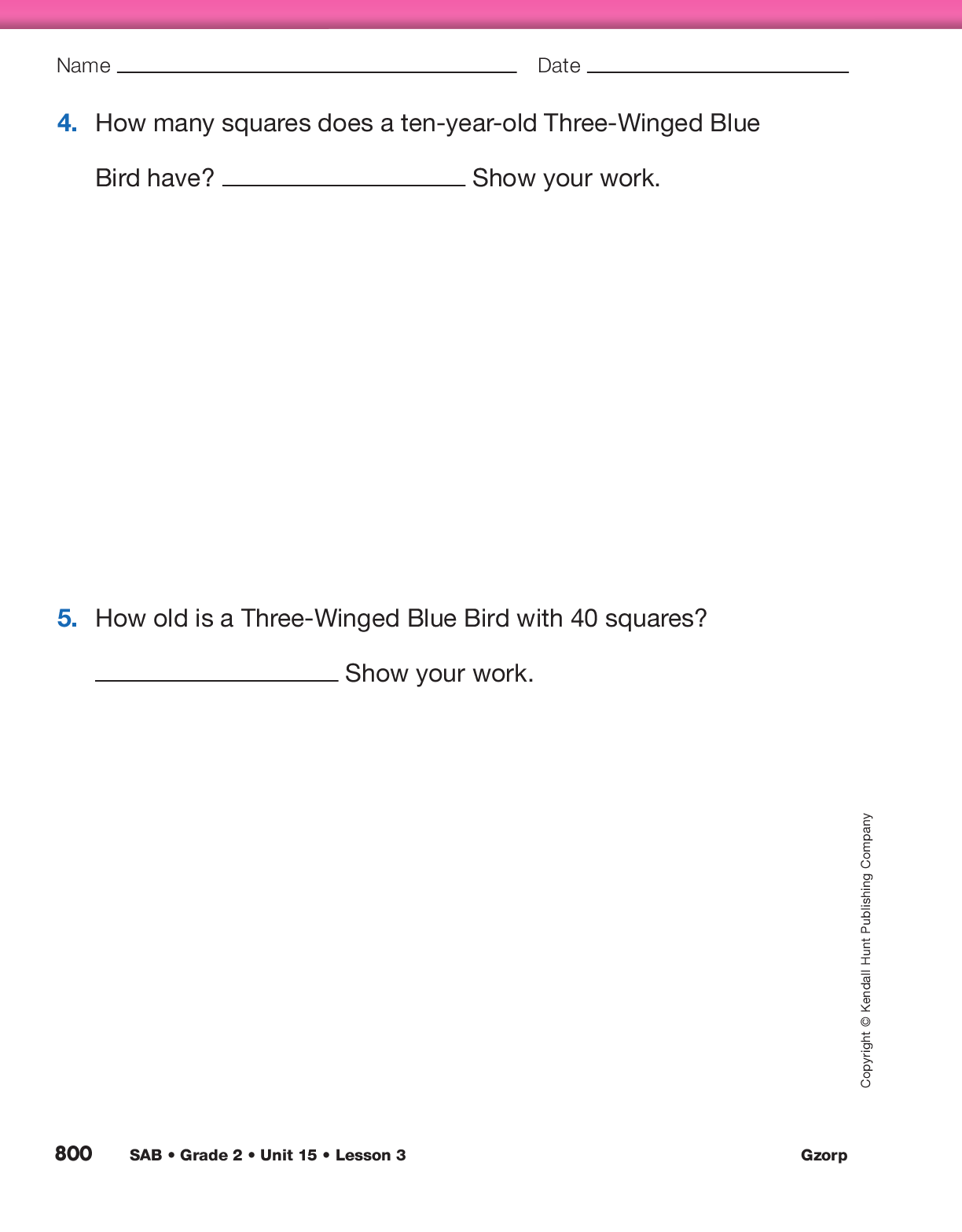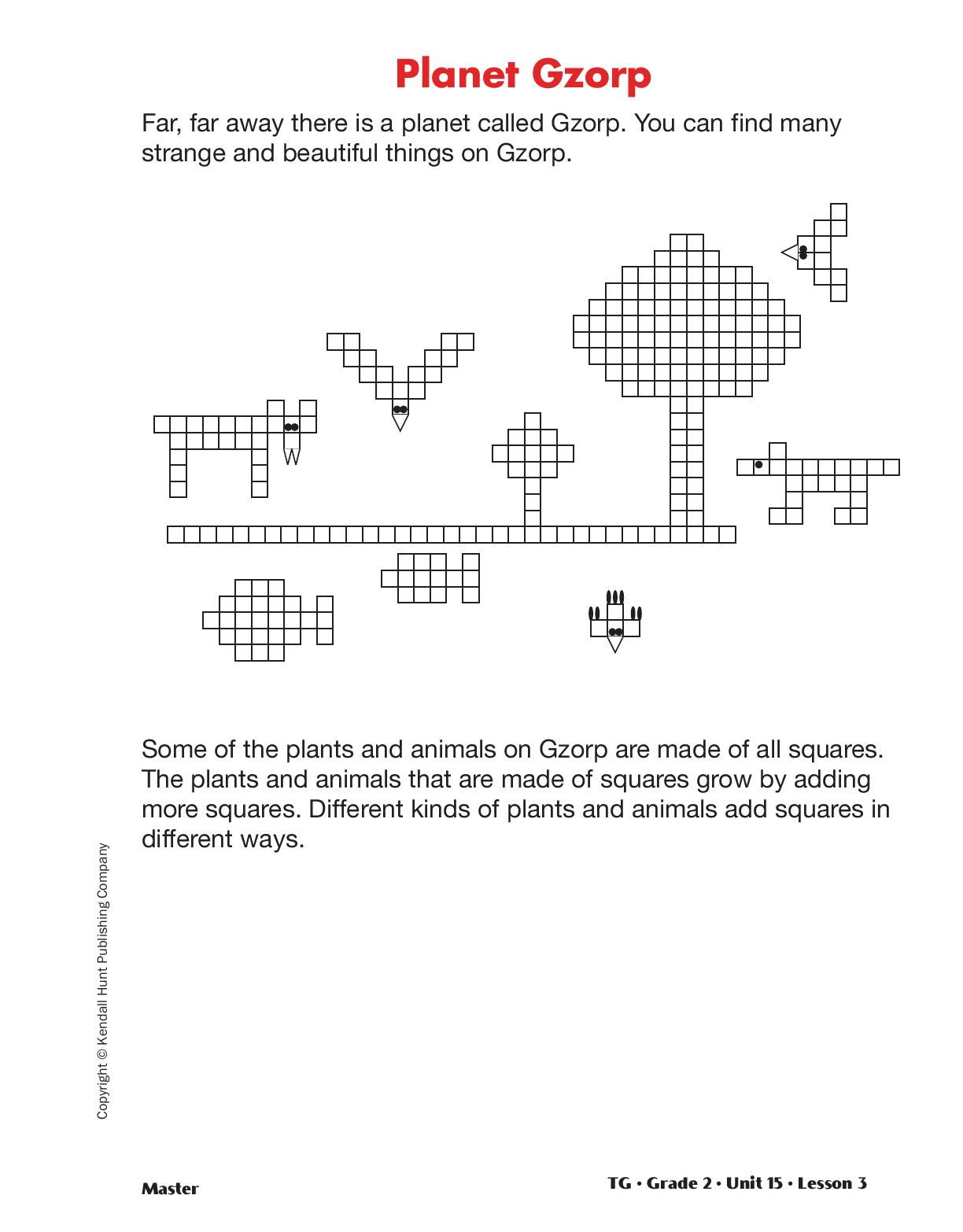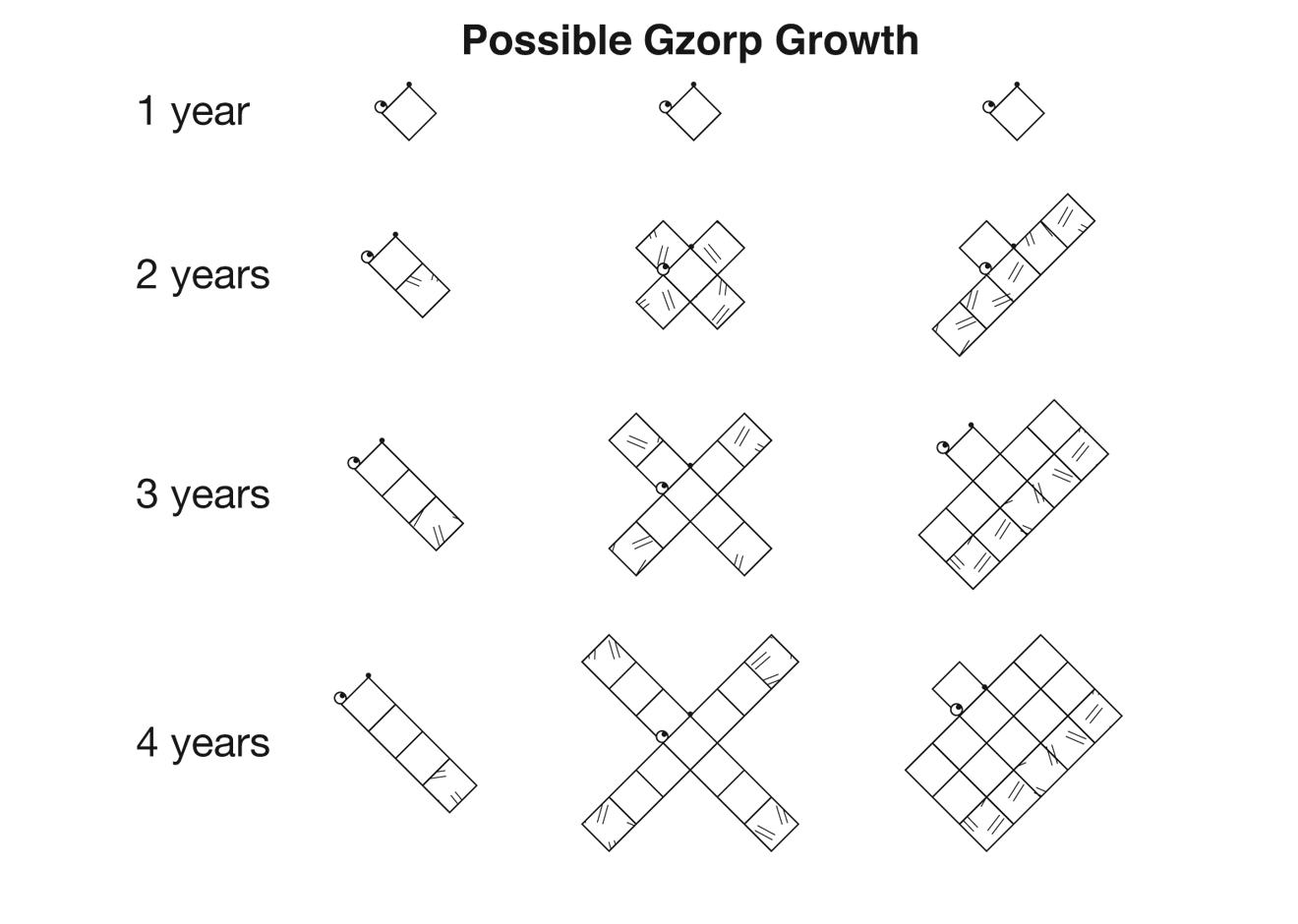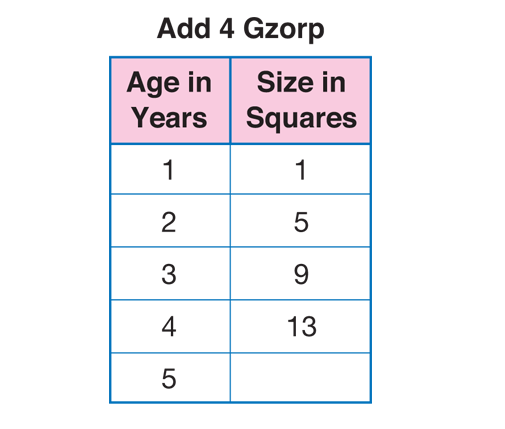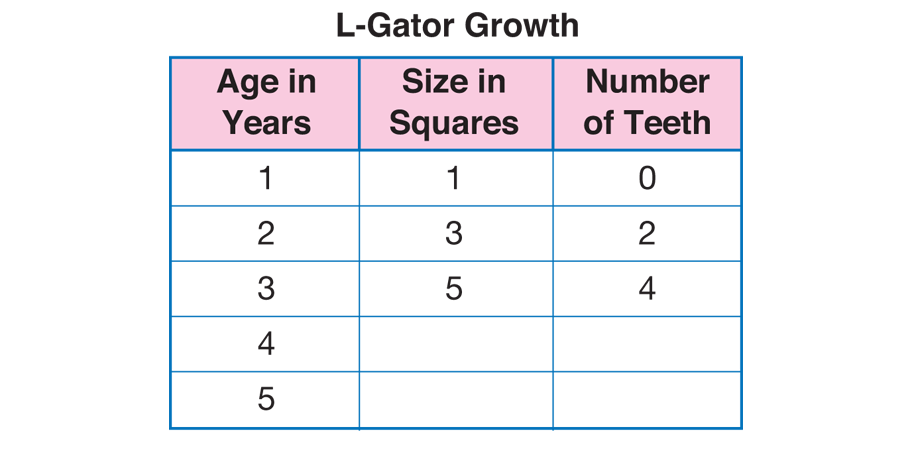Gzorp
Est. Class Sessions: 2–3Developing the Lesson
Part 1: Adding Growth Patterns
Introduce Gzorp Creatures. Use a display of the Planet Gzorp Master to introduce students to Planet Gzorp, where there are strange creatures made of squares. Encourage students to examine the creatures and plants on Gzorp and tell how they are like creatures or plants on Earth. Explain to students that creatures and plants on Gzorp grow each year by adding squares. Pass out tiles and place one tile on a display.
Explain:
Model with tiles how the Gzorp creature might grow in one year. Emphasize that squares must touch edge to edge. Some students may show that the creature might grow one square on each side. Other students might show that their creature grows four squares, each sticking out of one side. Students might even show that their creature could turn into a bigger square where it grows squares all around. Encourage students to show how they think a Gzorp creature might grow.
Growth Patterns for Gzorp Creatures. Tell students that Gzorp creatures grow in patterns. Each year Gzorp creatues grow, they repeat the pattern. Display one tile. Again, tell students that this is a one-year-old Gzorp creature. Place one tile adjoining the creature. Tell students that this is a two-year-old Gzorp creature that grew one square.
Ask:
Place another adjoining tile to show growth for another year. See the first creature in Figure 1 for this growth pattern.
Ask:
Introduce the second creature in Figure 1. Explain that this Gzorp creature has a different growth pattern. As you display one tile, have students follow along by placing one tile on their desks. Tell students that this is another one-year-old Gzorp creature. Add 4 adjoining cubes to the one-year-old creature as shown in Figure 1. Encourage students to model this growth pattern with their squares.
Ask:
Add 4 more squares. Ask:
Model the growth pattern on a data table. See Figure 2.
Discuss other possible growth patterns for different creatures on planet Gzorp. For example, the third creature in Figure 1 has a +5 growth pattern. As you add squares for each year of growth, encourage students to describe the pattern, model the growth pattern in a data table and with tiles, and make predictions about how the creature will look in subsequent years.
L-Gator Growth Patterns. Instruct students to look at their L-Gator pages in the Student Activity Book. Explain that an L-Gator is another creature on Gzorp. After its first year it grows two teeth every year. Encourage students to model this growth pattern with their squares. Discuss how the L-Gator would look after three years and model it with squares. Ask students to tell how many squares the three-year-old L-Gator has. Develop a data table showing the number of squares and teeth an L-Gator has each year. See Figure 3.
Encourage students to work in pairs to complete the
L-Gator pages. Students may need some assistance
for
Questions 8–10. Ask the class to share strategies
they have for solving these problems. Students
might draw a picture, use a data table, or model the
L-Gator with manipulatives. Some students from a
second-grade classroom explained their strategies
for Question 9.
- I counted by 2s to 50 and that was 25 times. Then, I added 1 more year for the first year and that makes 26.
- I knew that 2 quarters makes 50 cents. So I added 25 and one (for the first year) and the answer is 26.
- Half of 40 is 20 and half of 10 is 5. Twenty and five is 25 plus 1 for the first year.
- I knew that an 11-year-old had 21 squares (Question 8). I subtracted 21 from 51 and that leaves 30. Half of 30 is 15. Then I added 11 + 15 = 26.
For further practice identifying, describing, and extending patterns, have students complete the Three-Winged Blue Bird pages.














